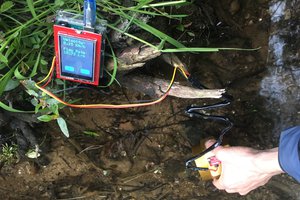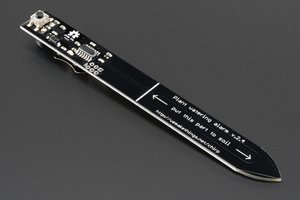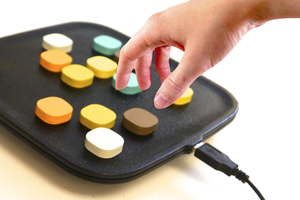Diabetic Keto-Acidosis remains the leading cause of death for younger insulin dependent diabetics. This projects aim is to help prevent the development of Diabetic Ketoacidosis through the use of an inexpensive (free of costly consumables, like test strips) and non-invasive testing method.
Our bodies produce ketones (through the breakdown of fatty acids in the liver) when glucose is unavailable to the bodies cells. This occurs, either under fasting conditions (essentially low intake of carbohydrates) or when there is insufficient insulin to transport glucose into the bodies cells. The breakdown of fatty acids produces the ketone bodies - aceto-acetate and beta-hydroxybutyrate, both of which are acidic and lower blood pH, when they reach high levels. To maintain blood pH levels acetoacetate is excreted through the kidney's and also the lungs (as acetone - resulting in the fruity odor on the breath of those in ketosis). Diabetic Keto-Acidosis is most likely to occur when individuals are sick, stressed, have blood glucose over 300 or in women, who are pregnant, with any type of diabetes.
Traditionally Keto-Acidosis is tested for using urine test strips, though, more recently there are meters that can test for ketones in blood. Each of these methods have their drawbacks
- Urine test strips for ketones are around $0.20 each and measure acetoacetate excreted by the kidneys.
- Blood test strips measure Beta-Hydroxybutyrate.
Currently there are no commercially available devices for measuring breath acetone for monitoring the development of Diabetic Keto-Acidosis
Three major design challenges that this project aims to address:
- Calibrating Ceramic Metal Oxide gas sensors.
- Discriminating between acetone and ethanol.
- Removing moisture from exhaled air (normally exhaled air has a humidity level of 95%) without without effecting acetone concentration.
This project strives to use "off the shelf" parts, with the objective of making it easy for others to reproduce.
Developing a reproducible method of calibration for Ceramic Metal Oxide gas sensors will make it easier other hardware developers to accurately use these types of sensors - while it is easy to adjust the sensitivity of these sensors there is currently no method (that I've found) for calibrating readings with actual concentrations of the target gas.
Open Source License - GNU General Public License (v3)
Open Hardware License - all schematics, gerbers, etc. will be open (once these are done I will submit them to www.oshwa.org)
 Tom Meehan
Tom Meehan

 Eben
Eben
 Valentin Ortega
Valentin Ortega
 theresa.ohm
theresa.ohm
 Elijah Ki-Zerbo
Elijah Ki-Zerbo
Recommend looking at this company: https://keto-mojo.com They redistribute a major Asian medical device manufacturer's product in the US. It measures both blood glucose and ketones, with two different strips. When measuring glucose, also measure the total hemoglobin and hematocrit values. Their key message is the constant ketone strip supply at $1 each. There are no other companies on the US market doing this at the moment. Should the reason be avoiding DKA or on keto diet this company delivers a workable, sustainable, reliable and I think cheap ketone measurement.